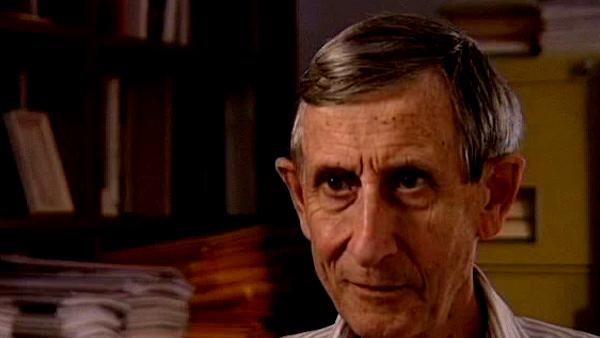NEXT STORY

Fermi's rejection of our work
RELATED STORIES

NEXT STORY

Fermi's rejection of our work
RELATED STORIES


|
Views | Duration | |
|---|---|---|---|
| 91. Gerry Brown | 1 | 1536 | 00:58 |
| 92. Attempts to make quantum electrodynamics into a completely... | 1 | 1938 | 04:31 |
| 93. Work on the strong interactions | 1518 | 03:17 | |
| 94. Fermi's rejection of our work | 1 | 3492 | 06:35 |
| 95. Why I don't like the PhD system | 3 | 4802 | 06:56 |
| 96. Being the laundry boy during the Oppenheimer security hearings | 1845 | 03:10 | |
| 97. Leave Princeton if Oppenheimer was sacked? | 1744 | 01:30 | |
| 98. Summer school at Les Houches | 2317 | 01:33 | |
| 99. Work at Berkeley with Charles Kittel | 2489 | 01:32 | |
| 100. Ferromagnetism and spin wave theory | 1625 | 05:06 |


When I came back to Cornell in 1951, then as a professor, I started a new programme which was dealing with the strong interactions. It was clear we'd done as much as we could with quantum electrodynamics: quantum electrodynamics was not a closed theory, clearly it had to be embedded in something larger if it was to become something mathematically well defined. So the next thing to do was to look at the strong interactions which in some way or other must be connected. And by that time we were starting to get good information from the experiments that Fermi was doing, the first really quantitative experiments on meson-proton scattering. In Chicago he had this beautiful new cyclotron. So the experimental data were starting to come out showing how mesons and protons really do interact, energies up to about four hundred million volts. So we organised, including Sam Schweber, himself, and various other people, we organised a team effort in Cornell to do the strong interactions, using the same tricks we used in quantum electrodynamics, but with certain additional approximations because the interactions were strong, so one had to chop off the higher order effects in some way which wasn't just a simple perturbation theory. The method we used was called the Tamm-Dancoff method, which effectively meant neglecting the higher orders, but in a way that made it somewhat more physical than the... just ignoring everything beyond the second order. And so the Tamm-Dancoff method was a way of more or less just ignoring anything beyond two particle interactions and making very crude approximations. So we sat down and did a set of rather careful and complicated calculations, essentially describing interaction between a meson and a proton so that, amongst other things, we would get the scattering cross sections. And we worked on this for about a year and a half or so, and we got some rather impressive numerical results. We were able to calculate the cross sections. The basic theory was the pseudo-scalar meson theory as it then existed. It was a theory simply of a nucleon field interacting with a pseudo-scalar meson field, which was the pion field which had positive, neutral and negative components, and it had pseudo-scalar interaction with the proton. That was the basic physics from which we started. And from that we managed to derive the scattering cross sections, using these rather crude approximations. And the results were rather encouraging. They seemed to agree pretty well with what Fermi found experimentally.
Freeman Dyson (1923-2020), who was born in England, moved to Cornell University after graduating from Cambridge University with a BA in Mathematics. He subsequently became a professor and worked on nuclear reactors, solid state physics, ferromagnetism, astrophysics and biology. He published several books and, among other honours, was awarded the Heineman Prize and the Royal Society's Hughes Medal.
Title: Work on the strong interactions
Listeners: Sam Schweber
Silvan Sam Schweber is the Koret Professor of the History of Ideas and Professor of Physics at Brandeis University, and a Faculty Associate in the Department of the History of Science at Harvard University. He is the author of a history of the development of quantum electro mechanics, "QED and the men who made it", and has recently completed a biography of Hans Bethe and the history of nuclear weapons development, "In the Shadow of the Bomb: Oppenheimer, Bethe, and the Moral Responsibility of the Scientist" (Princeton University Press, 2000).
Tags: Cornell University, 1951, Chicago University, Enrico Fermi, Sam Schweber
Duration: 3 minutes, 18 seconds
Date story recorded: June 1998
Date story went live: 24 January 2008